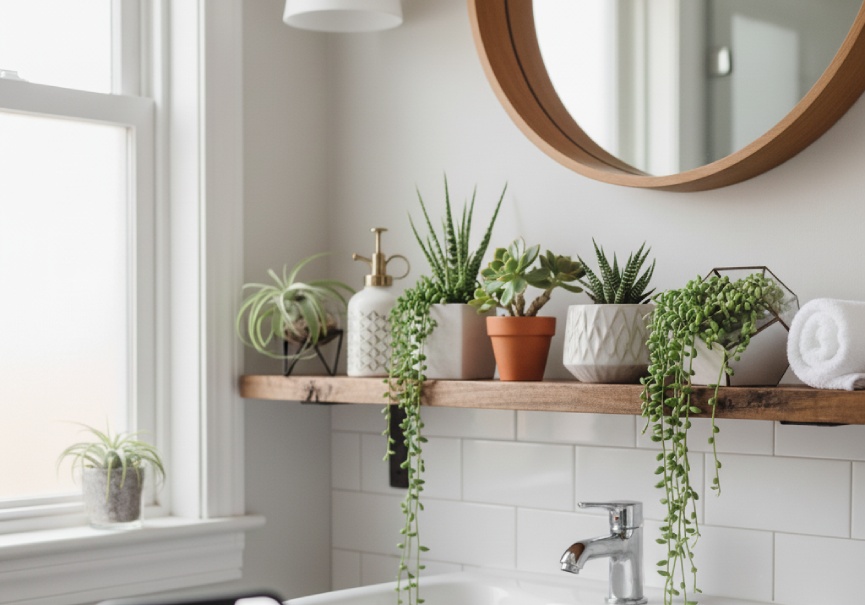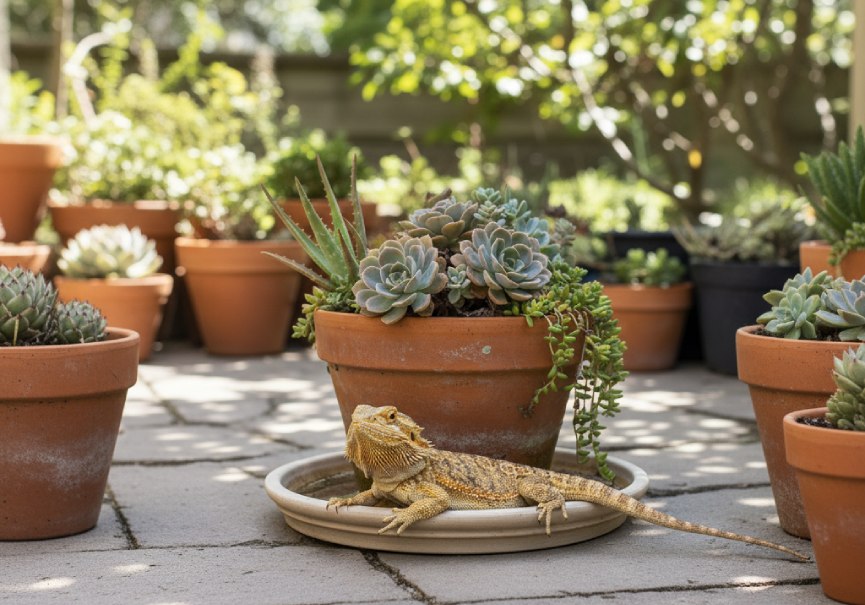Do Succulents Need Sunlight?: Everything You Need to Know

Introduction
Succulents are a favorite among plant lovers, both indoors and outdoors, admired for their striking shapes, rich textures, and minimal maintenance needs. These resilient plants are naturally adapted to dry, arid regions and have developed unique mechanisms to store water and survive in tough conditions. However, despite their drought tolerance, succulents still rely heavily on sunlight for survival and growth.
Sunlight fuels photosynthesis, the process that allows all plants, including succulents, to create the energy they need to thrive. Without sufficient sunlight, even the hardiest succulent can become weak, pale, and unhealthy. In this article, we’ll explore the essential relationship between succulents and sunlight, helping you understand exactly how much light they need to stay vibrant and strong.
Understanding the Nature of Succulents
Succulents form a diverse group of plants characterized by their ability to store water in their leaves, stems, or roots. Found across deserts, mountains, and even rainforests, succulents come in over 10,000 species worldwide, each uniquely adapted to its native environment. Popular examples include Aloe Vera, Echeveria, Jade Plant, Haworthia, and Cacti.
Their fleshy leaves and stems are designed to retain moisture, allowing them to survive weeks or even months without rain. In addition, succulents minimize water loss through transpiration control a process where microscopic pores on their leaves, called stomata, open primarily at night to reduce evaporation during the day. Some even have waxy coatings or fine hairs to trap humidity around their surfaces.
Despite their efficiency in conserving water, succulents still depend on sunlight. Through photosynthesis, they convert sunlight, carbon dioxide, and water into sugars that fuel their growth. Without enough light, succulents cannot produce the energy they need, leading to stunted growth and eventual decline.
The Role of Sunlight in Succulent Growth
Sunlight is the life source of every plant, and succulents are no exception. It provides the energy required for photosynthesis and directly influences a plant’s growth, shape, and coloration.
Most succulents are sun-loving species that thrive with at least six hours of direct sunlight daily. When given sufficient light, succulents grow compactly, maintain strong colors, and produce new leaves and offsets more readily.
However, sunlight needs vary between species. For example:
- Haworthia and Gasteria prefer bright, indirect light and can suffer from too much direct exposure.
- Echeveria, Sedum, and Agave love full sun and require intense light to maintain their vibrant hues and rosette shapes.
Sunlight also affects coloration. Many succulents display their most beautiful reds, purples, or oranges when exposed to bright light. These pigments, called anthocyanins and carotenoids, are protective compounds that activate under stronger sun exposure.
That said, too much sunlight can be harmful. Intense, prolonged exposure, especially during midday heat, can scorch leaves, leaving brown or white patches known as sunburn. This damage can weaken the plant and inhibit growth.
To avoid this, introduce your succulents gradually to brighter conditions and provide partial shade during the hottest hours.
Succulents That Require Strong Sunlight
While most succulents enjoy bright light, certain species truly thrive under intense, direct sunlight. These include:
- Echeveria
- Haworthia
- Sedum
- Crassula
- Aloe Vera
- Agave
- Sempervivum (Hens and Chicks)
- Kalanchoe
- Graptopetalum
- Portulacaria afra (Elephant Bush)
Even for sun-loving varieties, it’s crucial to monitor for signs of overexposure. Excessive sunlight can cause sunburn, especially during hot summer months. If you live in a region with strong sunlight, consider using shade cloths or positioning your plants where they receive morning light and afternoon shade.
The Ideal Sunlight Exposure for Succulents
A. How Much Sunlight Do Succulents Need?
Generally, succulents thrive with at least six hours of direct sunlight per day. Many outdoor species can handle full-day sun exposure, provided they are planted in well-draining soil that prevents waterlogging and root rot.
B. Determining the Light Needs of Your Succulent
Each succulent species has its own light tolerance. You can identify your plant’s needs by observing its behavior:
- Stretching or leaning toward the light means it’s not getting enough sunlight.
- Brown, yellow, or crispy leaves may indicate sunburn or excessive exposure.
Consult care guides for your specific plant to adjust light conditions accordingly.
C. Factors Affecting Sunlight Requirements
Several factors influence how much light succulents need:
- Sun intensity: Plants in tropical or desert regions may need more shade than those in mild climates.
- Season: Succulents require less protection in winter and more shade in summer.
- Location: Indoor succulents often need more light because window glass filters sunlight.
- Soil: Well-draining soil allows for better sun tolerance by preventing overheating and root damage.
Understanding these factors helps ensure your succulents get balanced light year-round.
The Effects of Too Much Sunlight
Sunburn in Succulents
Sunburn occurs when a succulent receives more light than it can handle, especially after being moved suddenly from shade to full sun. The damage manifests as whitish, yellowish, or brown patches on the leaves, which may eventually dry out or fall off.
Preventing Sunburn
To prevent sunburn:
- Gradually acclimate your plants to direct sunlight over a week or two.
- Provide shade during midday in hot weather.
- Use shade cloths or filtered light for sensitive varieties.
By managing exposure carefully, you can keep your succulents healthy and vibrant without risking burn damage.
Can Succulents Grow Indoors?
Yes, succulents can grow beautifully indoors if given the right light, soil, and care conditions.
Lighting
Indoor succulents prefer bright, indirect sunlight near south- or west-facing windows. If your home lacks natural light, supplement with artificial grow lights to mimic daylight conditions.
Soil and Watering
Use a well-draining mix ideally one designed for cacti and succulents, or create your own blend with potting soil, sand, and perlite. Water sparingly, only when the soil is completely dry. Overwatering is the most common reason indoor succulents fail.
Temperature and Humidity
Keep succulents in moderate temperatures (60–75°F or 15–24°C) and avoid humid environments.
Propagation
Succulents propagate easily through leaf or stem cuttings, making them an excellent choice for expanding your indoor plant collection.
Artificial Lighting for Indoor Succulents
If natural light is limited, artificial lighting can keep your succulents thriving. Here are the most effective options:
- LED Grow Lights: Energy-efficient, full-spectrum, and long-lasting, ideal for all succulents.
- Fluorescent Grow Lights: Affordable and emit minimal heat, suitable for small spaces.
- High-Intensity Discharge (HID) Lights: Offer powerful illumination for larger collections but require more energy.
- Incandescent Lights: Not ideal as a primary source; use only for supplemental lighting since they emit too much heat.
When using artificial lights, position them close enough to your plants (6–12 inches away) and keep them on for 12–14 hours daily to replicate natural daylight cycles.
Succulents That Thrive Indoors or in Indirect Light
Many succulents adapt well to indoor or shaded environments. Some of the best include:
- Aloe Vera
- Echeveria
- Haworthia
- Gasteria
- Jade Plant (Crassula ovata)
- String of Pearls (Senecio rowleyanus)
- Zebra Plant (Haworthia fasciata)
- Panda Plant (Kalanchoe tomentosa)
- Snake Plant (Sansevieria)
- Crown of Thorns (Euphorbia milii)
- Christmas Cactus (Schlumbergera)
- Burro’s Tail (Sedum morganianum)
- Ponytail Palm (Beaucarnea recurvata)
- Zanzibar Gem (Zamioculcas zamiifolia)
- Hens and Chicks (Sempervivum)
While these varieties tolerate low light, they still need some bright, indirect sun to thrive. Rotate your plants occasionally to promote even growth.
How Much Sunlight Do Outdoor Succulents Need?
Outdoor succulents generally require at least six hours of bright sunlight per day. However, factors like local climate and season can affect their ideal placement.
- In hot, dry climates, provide partial shade during peak afternoon heat.
- In cooler regions, maximize sun exposure to encourage robust growth.
Monitor your plants closely; yellowing leaves may indicate too much sun, while stretching or pale colors suggest insufficient light. Adjust their position as needed to maintain a healthy balance.
Do Succulents Need Sunlight in Winter?
During winter, when daylight is shorter and weaker, succulents slow their growth and require less sunlight overall. However, they still need 4–6 hours of bright, indirect light daily to stay healthy.
Move them closer to a window or use grow lights to compensate for the lower natural light levels. Avoid cold drafts near windows and ensure they remain in a dry environment.
Some varieties like Haworthia and Gasteria actually prefer filtered winter light and can be damaged by intense sun, even during cooler months. Always observe your plants and adjust their light accordingly.
Conclusion
Succulents undeniably need sunlight to thrive. It’s the foundation of their energy production, vibrant coloration, and structural strength. Understanding how much and what type of light your succulents need is key to their long-term health and beauty.
By balancing exposure, offering bright light while avoiding extreme heat, you can enjoy compact, colorful, and flourishing succulents year-round. Whether you grow them indoors under artificial lights or outdoors in the sun, giving your plants the right light conditions ensures they reach their full potential.
FAQs
1. Do succulents need sunlight to survive? Ans:- Yes. Succulents depend on sunlight for photosynthesis, which produces the energy required for their growth and survival.
2. How much sunlight do succulents need daily? Ans:- Most succulents need around six hours of direct sunlight each day. Shade-tolerant species can thrive with bright, indirect light.
3. What happens if succulents get too much sunlight? Ans:- Excess sunlight can cause sunburn, leading to discolored, brittle, or scorched leaves.
4. Can succulents grow indoors? Ans:- Absolutely. They thrive indoors if placed in bright, indirect light or under grow lights, provided they have well-draining soil and minimal watering.
5. What are the best artificial lights for succulents? Ans:- LED and fluorescent grow lights are the most efficient and effective for indoor succulent care.
6. Can succulents live without sunlight completely? Ans:- No. While they can survive short periods in low light, succulents need some form of sunlight or artificial light for long-term health.
7. How can I tell if my succulent isn’t getting enough light? Ans:- Signs include stretching, faded colors, and thin, weak growth. Move the plant to a brighter location.
8. Can succulents get sunlight through a window? Ans:- Yes, but sunlight intensity decreases through glass. Place them near south- or west-facing windows for best results.
9. How do I protect my succulents from sunburn? Ans:- Introduce them gradually to direct sunlight and provide shade during hot midday hours.
10. Do succulents need less sunlight in winter? Ans:- Yes, they grow more slowly during winter and need about 4–6 hours of light daily, ideally bright but indirect.






